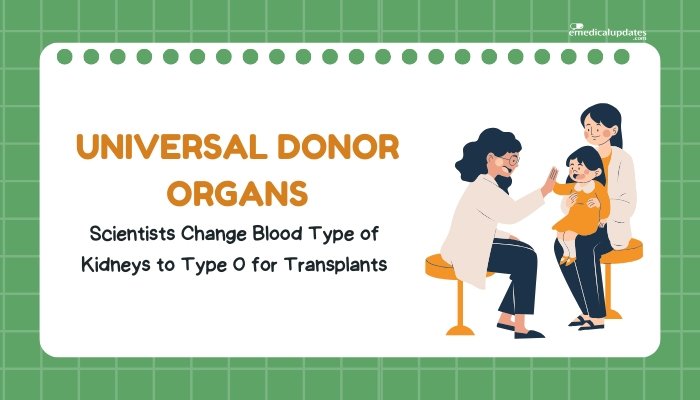Introduction
Losing the ability to see can profoundly affect a person’s quality of life, independence, and mental well-being. While some causes of blindness—such as cataracts—are reversible, many remain incurable, particularly when the retina or optic nerve is severely damaged. However, recent breakthroughs in bionic eye research show that specialized brain implants can bypass damaged visual pathways and help restore partial vision.
In ongoing clinical trials, these devices transmit information directly to the visual cortex, letting users perceive flashes of light or basic shapes. Below, we explore how these implants work, the current state of trials, and the promise they hold for the future of sight restoration.
The Need for a New Approach
Limits of Existing Solutions
Retinal implants and other external prosthetic aids aim to replace or augment the retina when only retinal damage is the problem. But for many causes of blindness—damage to the optic nerve, or advanced degenerative diseases—standard bionic retinas may not suffice. Moreover, conditions like advanced glaucoma or retinitis pigmentosa can destroy large sections of the retina, leaving no functional cells to stimulate.
Direct Brain Stimulation
Instead of relying on residual eye function, brain-based bionic eyes address blindness at the cortical level. By placing electrodes on or in the visual cortex, the device can deliver controlled electrical impulses that the brain interprets as visual input. This approach bypasses the damaged eye or optic nerve, potentially helping a broader array of blind patients.
How the Brain Implant Works
The Visual Pathway in a Nutshell
In healthy vision:
- Retina: Detects light and converts it to electrical signals.
- Optic Nerve: Transmits these signals to the visual cortex in the occipital lobe of the brain.
- Visual Cortex: Interprets these signals as images.
When the retina or optic nerve are nonfunctional, that signal never reaches the brain. Brain implants artificially replicate or bypass earlier steps.
Implant Design
Bionic eye brain implants often involve:
- Camera or External Sensor: Capturing video or images, worn on glasses or a headpiece.
- Processor: Converts visual data into simplified patterns.
- Implant Electrodes: Placed on or within the visual cortex, each electrode stimulates neurons to create a “phosphene”—a spot of light perceived by the user. With enough electrodes, these spots can form rudimentary images or outlines.
Minimizing Risks
Brain surgery always carries risks—hemorrhage, infection, or seizure. Some prototypes aim for less invasive placements, using flexible electrode arrays or advanced imaging to precisely position hardware. Researchers also carefully tune electrical impulses to avoid tissue damage.
Current Clinical Trials and Results
Early Feasibility Studies
- Partial Vision Restoration: Some participants in pilot trials can detect bright spots, lines, or the motion of objects in front of them. Others learn to interpret these signals as basic shapes or letters.
- Device Safety: Preliminary data shows stable implantation and function for several months or more. Common side effects include headaches or mild discomfort, usually managed by adjusting stimulation parameters.
Real-World Function
While the vision provided is not close to normal, some patients note:
- Improved Orientation: They can locate doors, identify high-contrast objects, or sense motion in a room.
- Increased Independence: Even partial vision helps reduce collisions or spills, and aids in performing daily tasks with more confidence.
Next Steps for Trials
Companies and research institutions are:
- Scaling Electrode Count: More electrodes may yield higher resolution images, though this complicates surgery and hardware.
- Refining Image Processing: Advanced software can help shape the raw camera feed into more intelligible patterns.
- Longer Follow-Ups: Studies must verify that electrodes remain effective and do not degrade or shift over years.
Potential Benefits
- Broad Patient Population: By bypassing the entire eye, this approach might help those with advanced damage or total vision loss from diverse conditions.
- Maintained Brain Plasticity: For those who lost sight later in life, the visual cortex might still be receptive to new input, enabling better adaptation.
- Complementary to Other Solutions: Patients who can’t benefit from retinal or optic nerve–focused implants might find a direct cortical device to be the only viable option.
Challenges and Considerations
Complexity and Cost
Neurosurgical procedures and cutting-edge electronics can be expensive. Ongoing R&D will likely bring improvements, but accessibility depends on widespread manufacturing and insurance coverage.
Resolution Limits
Current electrode arrays produce low visual fidelity—think a rough pixel grid with dozens or hundreds of “dots.” Achieving thousands or tens of thousands of discrete points for meaningful detail is an engineering challenge.
Brain Adaptation
Adapting to these artificially produced visual cues requires training. Users must practice interpreting flashes or patterns, akin to learning a new sensory language.
Future Directions
Minimally Invasive Implants
Researchers aim to reduce the scale and invasiveness of cortical electrodes by:
- Flexible, Ultrathin Arrays: Minimizing scarring and maintaining stable placement.
- Laser/Ultrasound Approaches: Potentially delivering stimulation through the skull with no surgery (still highly experimental).
Neural Plasticity Enhancement
Therapies like virtual reality training or neural feedback might accelerate how well patients interpret bionic signals, bridging the gap to more intuitive “seeing.”
Combining Approaches
A synergy might arise with gene therapy or regenerative medicine—some patients might partially restore the retina or optic nerve, supplemented by direct cortical inputs for better resolution.
Frequently Asked Questions
- Is this technology widely available now?
- Not yet. It’s in advanced research or early clinical trial stages. Widespread clinical use could still be several years away.
- Will users see in color or just shapes?
- Current systems provide black-and-white shapes or flashes. Achieving color requires more sophisticated designs and more electrodes.
- Are there major risks from the surgery?
- As with any brain operation, risks include bleeding, infection, or device malfunction. Trials are focusing heavily on mitigating these.
- Does insurance cover this procedure?
- At this experimental stage, coverage is unlikely. If proven effective and approved, coverage policies might evolve.
- Who qualifies for such an implant?
- Usually, adults with total or near-total blindness, especially where the retina or optic nerve is irreparably damaged. Suitability is determined by specialized assessments.
Conclusion
Bionic eye technology that bypasses the eye and optic nerve entirely, reaching the visual cortex through an implanted electrode array, could offer new hope to individuals with profound blindness from advanced retinal diseases, glaucoma, or nerve damage. Though in its infancy, early human trials in brain-dead donors or small patient cohorts show that the implant can yield meaningful, if rudimentary, visual perceptions. As the resolution, safety, and user training improve, these “brain-based bionic eyes” may eventually step beyond the lab, fulfilling a longstanding goal: restoring at least partial sight in those once considered permanently blind.
Innovation in electrode materials, surgical techniques, and AI-driven image processing further spurs optimism. However, cost, complexity, and the initial low resolution remain limiting factors. Should future breakthroughs surmount these challenges, the notion of “bionic vision” could transition from science fiction to a real option for thousands worldwide afflicted by irreversible sight loss.
References
-
Fernandez E, et al. (2021). “Intracortical visual prostheses for the blind.” Nature Commun.
-
Lewis PM, et al. (2015). “Advances in visual cortex stimulation for restoring vision.” Brain.
-
Normann RA, et al. (2020). “Visual perception from microelectrode arrays in the occipital lobe.” J Neural Eng.
-
Davis KE, et al. (2022). “Clinical progress of cortical vision prostheses.” Trends Neurosci.







